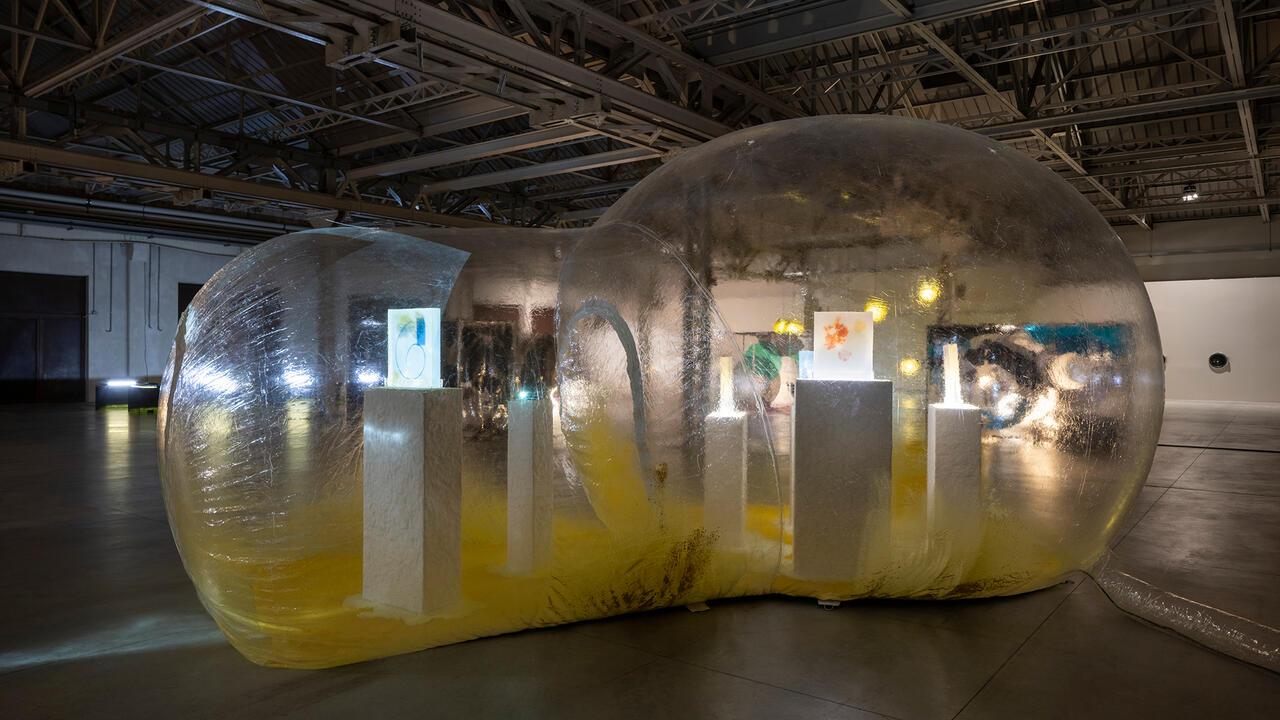Mommy
Yale Union, Portland, USA
Yale Union, Portland, USA

‘Mommy’ is a word we are all familiar with. We hear it daily, at home, on the street, in public places, shops, cafes. The incessant demands being made of the mother can seem like interruptions, a constant questioning, the need to always be attentive to another individual. Curated by Hope Svenson with Robert Snowden, the 14 artists in this exhibition at Yale Union followed a line of questioning that considered the constraints of time and space on the maternal subject. A dark and intellectual consideration of motherhood and the maternal subject, it made visible reproductive labour and the imbalance of power as reflected through uncompensated ‘women’s work’.
A large raised platform in the centre of the exhibition space accommodated several works. Lutz Bacher’s Pregnant (2010) was positioned awkwardly against the platform on the floor. A jarring, life-sized, stuffed-fabric human form, its dirty soles embodied the figure of speech ‘barefoot and pregnant’. The exhibition design provoked a visceral response: at times, it felt as though the space were contracting, as if you were being confined, or suddenly confronted. Works on the wall further created a sense of the exhibition space closing in on the viewer. For instance, Diane Simpson’s Bib (quilted) (2006) is a full-length, body-sized bib constructed from aluminium, resembling cumbersome body armour, which suggests the cumulative weight of demands on the body of the mother.
In her 2008 book Maternal Encounters: The Ethics of Interruption, Lisa Baraitser discusses the need to resist limitations on time, and the negotiation required between childcare, career and mundane daily tasks, as well as the spaces of the home and workplace. To simultaneously occupy her roles as an artist and a stay-at-home mother, Barbara T. Smith relocated a Xerox copier machine associated with the administrative space of the office into her home, transforming her domestic environment into her studio. The Xerox copier becomes the site through which she mediates her art. In the exhibition, three sculpture books – Skyline (1956/1966); Statistical Evidence (1965/1966) and Untitled (green) (1965/66) and two framed Xerox prints, (Orange (1975) and Rice and Object (1965) – were laid flat on the raised platform. Viewing these works alongside one another not only mimics the process through which the work was produced on the flatbed of the copier but it feels not dissimilar to the act of reading, one page at a time, encouraging a process of slowing down.
Aura Rosenberg’s Dialectical Porn Rock (1989–2012) opens up a space of discussion not frequently or openly addressed (beyond psychoanalysis): that of motherhood, desire and sexuality. Scattered across the platform were a dozen or so rocks with newspaper and magazine images attached to the surface, encased in resin, its sheen reminiscent of semen. There’s something humorous about these works: sensuous pornographic imagery applied to the hard cold surface of rocks obtained from a stream, which are then presented formally in the space of an exhibition. Far removed from their material origin these ‘hot rocks’ are quickly rendered anti-libidinal through their new institutional context.
Anicka Yi’s Signature of Things (2015), a newly commissioned work for ‘Mommy’, consisted of three Perspex vitrines, each containing a nutrient agar surface hosting bacteria obtained from the staff and board at Yale Union, set into the side of the exhibition display platform. To ensure that the conditions remained ideal for bacterial growth, Signature of Things required constant maintenance by staff, reflecting the responsibility to respond to the demands of a being or organism that relies on you for its survival.
It was Sonya Hamilton’s work Charlie (2014) that I found myself most drawn to. A classic representation of a house constructed from mud of a deep rust red with a worn appearance, it has a rectangular base complete with gabled roof and a cut-out door and windows. It was difficult to make out the interior, which was only partially lit. Its strength lay in the basic need to unapologetically demarcate a space for oneself, psychologically and physically.























